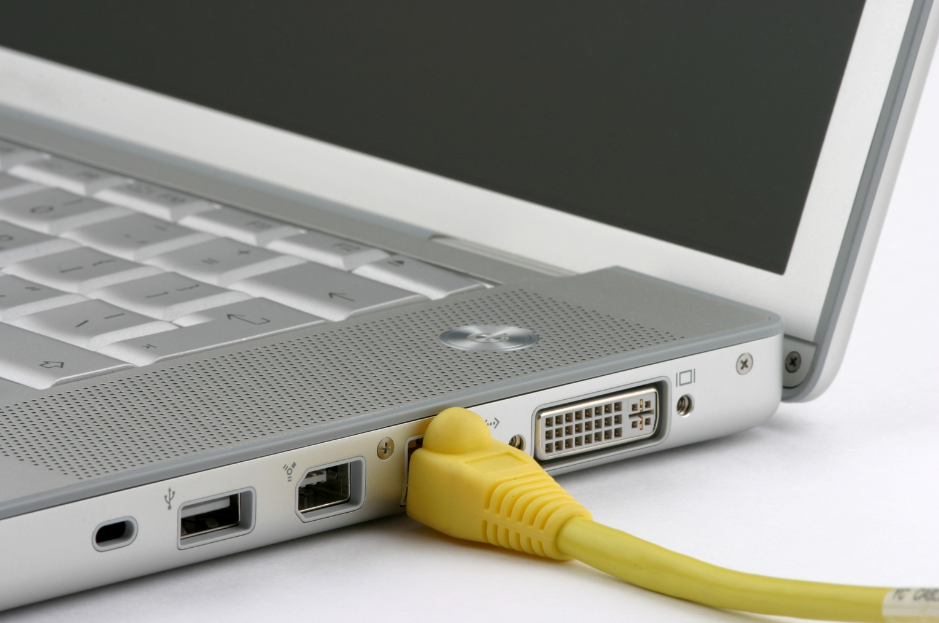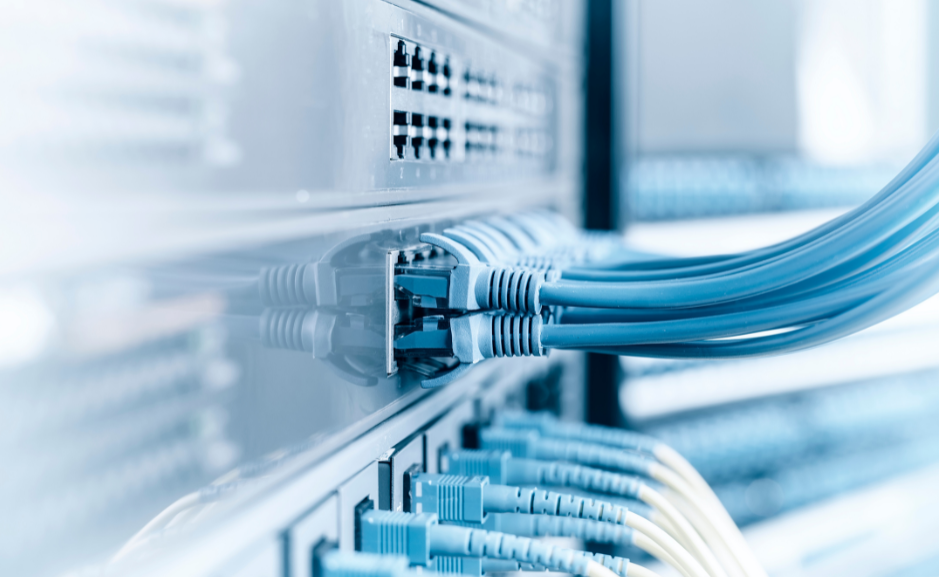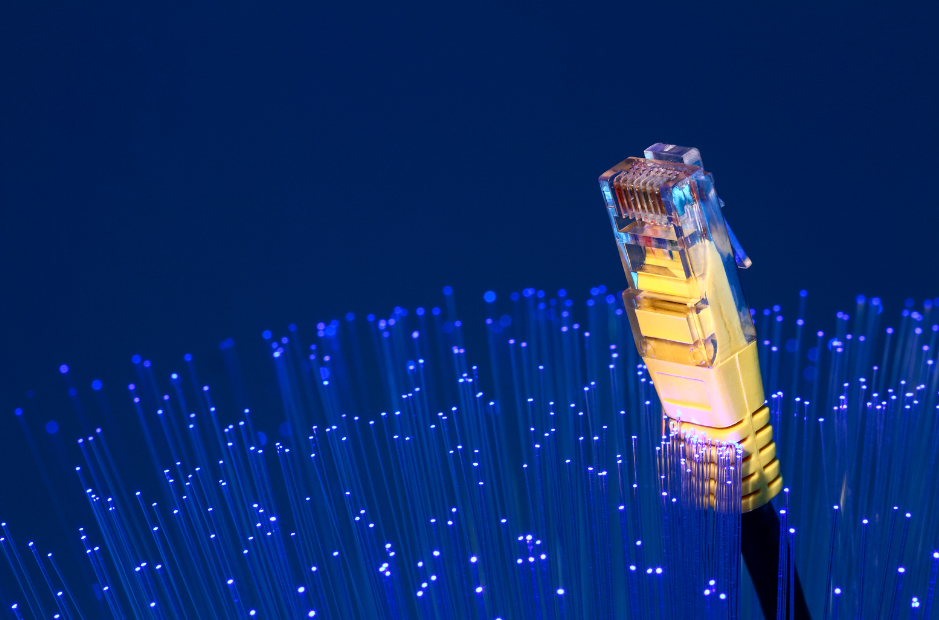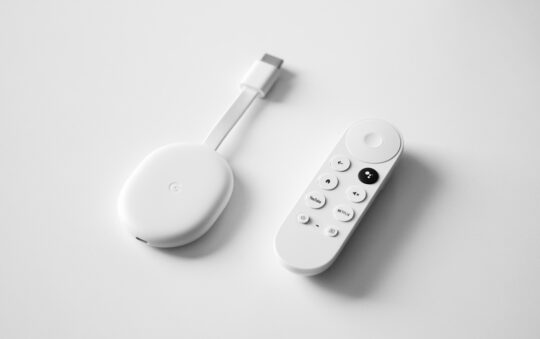Ethernet, is a technology that’s been around for decades and still plays a crucial role in our digital lives. But what exactly is it? And what is an ethernet connection? I’ll be exploring its definition, how it works, its various types, and its pros and cons. I’ll also take a look at how Ethernet connections can be used in home and work networks, and how it stacks up against other connection types. So, let’s get started!

What Is Ethernet, By Definition?
In a nutshell, Ethernet is a technology used to connect devices in a wired local area network (LAN) or wide area network (WAN). It allows devices to communicate with each other using a common network language or protocol.
And So An Ethernet Connection Is…
An ethernet connection is a connection between two devices using a specific type of cable to facilitate data transfer. Ethernet cables are the physical pathways over which the data travels. While ‘Ethernet’ is the transmission and formatting of the data in a method that is recognisable by other devices on your network.
How Does It Work?
Ethernet works by transmitting data in small packets across a network. Each packet contains the data being transmitted, the physical media access control (MAC) addresses of both the sender and receiver, and error correction information to detect transmission problems. Ethernet uses a protocol called Carrier Sense Multiple Access with Collision Detection (CSMA/CD) to manage data transmission and avoid data collisions.
The carrier device for ethernet is via a specific cable type, rather than a wireless signal that would facilitate the movement of data using WiFi.
The History & Evolution Of Ethernet
At one time, ethernet was everywhere. Connecting computers to modems, printers to computers and even Satellite TV boxes to a modem or router.
It has evolved significantly over the years. The Institute of Electrical and Electronics Engineers (IEEE) has released several updates to increase its performance. Current versions of Ethernet can support operations up to 400 gigabits per second (Gbps)! This would have been unfathomable when it was first introduced.
Let’s take a short journey through time to understand how Ethernet has evolved from its inception to the present day.
The Birth of Ethernet (1970s)
Ethernet was born out of a project at Xerox’s Palo Alto Research Center (PARC) in the 1970s. A team of engineers led by Robert Metcalfe and David Boggs were tasked with creating a method to link the center’s computers and the first laser printer. The result was Ethernet, a technology that allowed for the sharing of data across a network of computers.
The first version of Ethernet used coaxial cables and had a speed of 2.94 Mbps.
Ethernet Goes Open (1980s)
In the early 1980s, Xerox decided to relinquish its control over Ethernet and opened the technology to other companies. This led to the creation of the “DIX” standard, named after the three main companies involved: Digital Equipment Corporation, Intel, and Xerox. The DIX standard increased Ethernet’s speed to 10 Mbps.
In 1983, the Institute of Electrical and Electronics Engineers (IEEE) formalized the 802.3 standard, which is essentially Ethernet. The open nature of Ethernet and its backward compatibility with each version made it a popular choice for networking.
Fast Ethernet and Introduction of Twisted Pair Cables (1990s)
The 1990s saw Ethernet speeds increase tenfold with the introduction of Fast Ethernet, which offered speeds up to 100 Mbps. This was also the period when twisted pair cables (Cat5 and Cat5e) started to replace coaxial cables, making Ethernet networks easier to install and manage.
Gigabit Ethernet and Beyond (2000s and 2010s)
The early 2000s saw another tenfold increase in speed with the advent of Gigabit Ethernet, offering speeds up to 1,000 Mbps or 1 Gbps. This was soon followed by 10-Gigabit Ethernet, and eventually, by the mid-2010s, speeds reached up to 100 Gbps.
Ethernet Today (2020s)
Today, Ethernet continues to evolve and adapt to the needs of modern networks. With the latest standards, Ethernet can support speeds up to 400 Gbps. It remains a popular choice for many businesses and home networks due to its speed, reliability, and security.
From its humble beginnings at Xerox PARC to its current status as a networking powerhouse, Ethernet has proven to be a resilient and adaptable technology.

Types Of Ethernet Cable
Ethernet cables are used to connect network devices to the appropriate, routers or modems. They are also used to connect two devices of the same type directly, without a switch or router in between.
There are several types of Ethernet cables, each with different capacities and uses. For example, Category 5 (Cat5) cables support traditional and 100BASE-T Ethernet, while Category 6 (Cat6) works with 10 GbE.
Here is a breakdown of each type with a brief description:
Cat 5 (Category 5): This is an older type of Ethernet cable, largely obsolete today. It supports frequencies up to 100 MHz and speeds up to 100 Mbps.
Cat 5e (Category 5 Enhanced): An improvement over Cat 5, it reduces crosstalk (interference from adjacent wires). It supports frequencies up to 100 MHz and speeds up to 1 Gbps.
Cat 6 (Category 6): This cable supports frequencies up to 250 MHz and speeds up to 1 Gbps. It has better insulation to reduce crosstalk.
Cat 6a (Category 6 Augmented): An advancement of Cat 6, it supports frequencies up to 500 MHz and speeds up to 10 Gbps.
Cat 7 (Category 7): Known as Class F cable, it supports frequencies up to 600 MHz and speeds up to 10 Gbps. It uses a modified GigaGate45 connector, which is backward compatible with RJ45 Ethernet ports.
Cat 7a (Category 7 Augmented): It supports frequencies up to 1 GHz and speeds up to 40 Gbps at distances up to 50 meters.
Cat 8 (Category 8): The latest and fastest Ethernet cable, it supports frequencies up to 2 GHz and speeds up to 25 or 40 Gbps at distances up to 30 meters.
Each category of Ethernet cable is backward compatible, meaning you can use a newer category cable with an older category device. However, the speed and performance will be limited to the capabilities of the older device.
Capacity
The capacity of an Ethernet connection depends on the type of cable used. For instance, Cat5 cables can support data transmission speeds of up to 100 Mbps, while Cat6 cables can support speeds of up to 10 Gbps.
Performance
Ethernet offers reliable and secure connectivity, with consistent speed and low latency. It is generally resistant to noise and provides good data transfer quality.

Why And When Is Ethernet Used?
Before WiFi became a widespread technology, ethernet was by far the most common type of connection within home and business networks. Connecting any devices requiring internet to the local router or modem.
While it is less common in the home now, Ethernet is still widely used when high speed, security, and reliability are required. It is commonly used in local networks within specific organizations, such as company offices, school campuses, and hospitals.
Examples Of Using Ethernet In The Home
In a home setting, Ethernet can be used to connect devices like computers, gaming consoles, and smart TVs to the internet. It can also be used to set up a home network, allowing devices to communicate and share data with each other, without exposure to the wider internet.
Examples Of Using Ethernet In A Large Office
In a large office, Ethernet can be used to connect all computers and servers in a network, allowing for efficient data sharing and communication. It can also be used to connect printers and other peripheral devices to the network.
They can also be used for access to specific servers that have restricted local access, unavailable outside of the local network or intranet.
What Other Types Of Network Connection Are There?
Apart from Ethernet, there are other types of network connections, such as Wi-Fi, which allows devices to connect to the internet wirelessly. There’s also Power over Ethernet (PoE), which allows network devices to receive power and data over the same Ethernet cable.
While these make up the majority of network connections for internet services, there are a few others that are used primarily for small, local networks across a variety of different devices. Here are some of the more common:
Bluetooth: A short-range wireless communication technology designed for transmitting data between devices over short distances. It’s commonly used for connecting peripherals like keyboards, mice, and headphones to computers or smartphones.
Zigbee and Z-Wave: These are wireless protocols used primarily in home automation systems. They are designed to be low-power and low-data-rate, making them ideal for devices like light switches and sensors that don’t need to transmit a lot of data and need to conserve power.
Cellular/Mobile Networks (3G, 4G, 5G): These are the networks that your smartphone uses to access the internet and communicate with other devices when not connected to Wi-Fi. They can also be used to create a mobile hotspot, which other devices can connect to for internet access.
Near Field Communication (NFC): A short-range wireless connectivity technology that allows for communication between devices when they’re touched together, or brought within a few centimeters of each other.
Thunderbolt and USB-C: These are wired connections that can transmit data, video, audio, and power over a single cable. They’re commonly used to connect peripherals to computers, particularly to specific monitor ports, but can also be used for networking two computers together.
Each type of network connection has its own advantages and disadvantages in terms of speed, range, and the types of devices it can connect. The best choice depends on your specific needs and the devices you’re trying to connect.
Some devices, such as mobile phones will use multiple types of network connection. For example, they will use WiFi to connect to the internet, or they can use their 4G/5G mobile network to also provide internet access. They may also use Bluetooth to connect to peripherals such as a smart watch or earbuds.
How Does Ethernet Compare To Other Connection Types?
Compared to Wi-Fi, Ethernet offers more speed, reliability, and security. However, it requires a physical cable to connect devices, which can limit mobility.
Most of the other networking connection types mentioned above, are variations of wireless technology that have a very specific function. The exception to this is Thunderbolt and USB.
Thunderbolt and USB (particularly USB-C) can offer comparable or even faster speeds than Ethernet, and they can also carry power and video signals. However, they’re typically used for direct connections between devices, not for networking multiple devices together like Ethernet.
Side By Side Comparison Of Ethernet Vs WiFi
| Ethernet | WiFi | |
| Speed | Up to 400 Gbps | Varies, up to 1.2 Gbps with Wi-Fi 6 |
| Mobility | Limited, requires physical cable | High, no cables required |
| Security | High, difficult for outsiders to access | Varies, can be less secure |
| Installation | More complex, requires cabling | Simpler, no cabling required |
Advantages Of Ethernet
- High speed and consistent performance
- High security
- Reliable connection
- Resistant to noise interference
- Backward compatibility
Disadvantages Of Ethernet
- Limited mobility due to the need for physical cables
- Installation can be complex
- Not ideal for real-time or interactive applications
- Speeds can decrease with increased traffic



